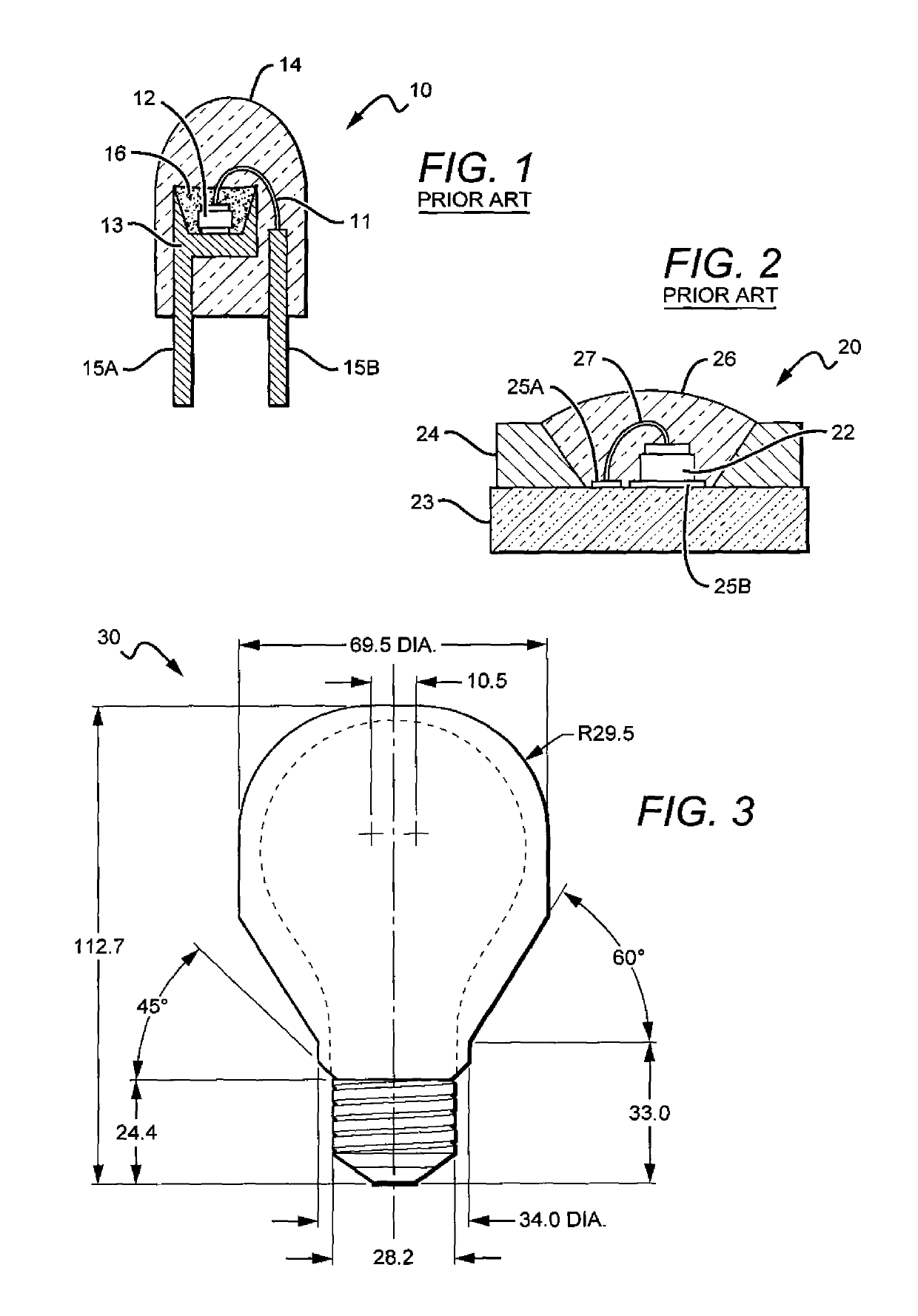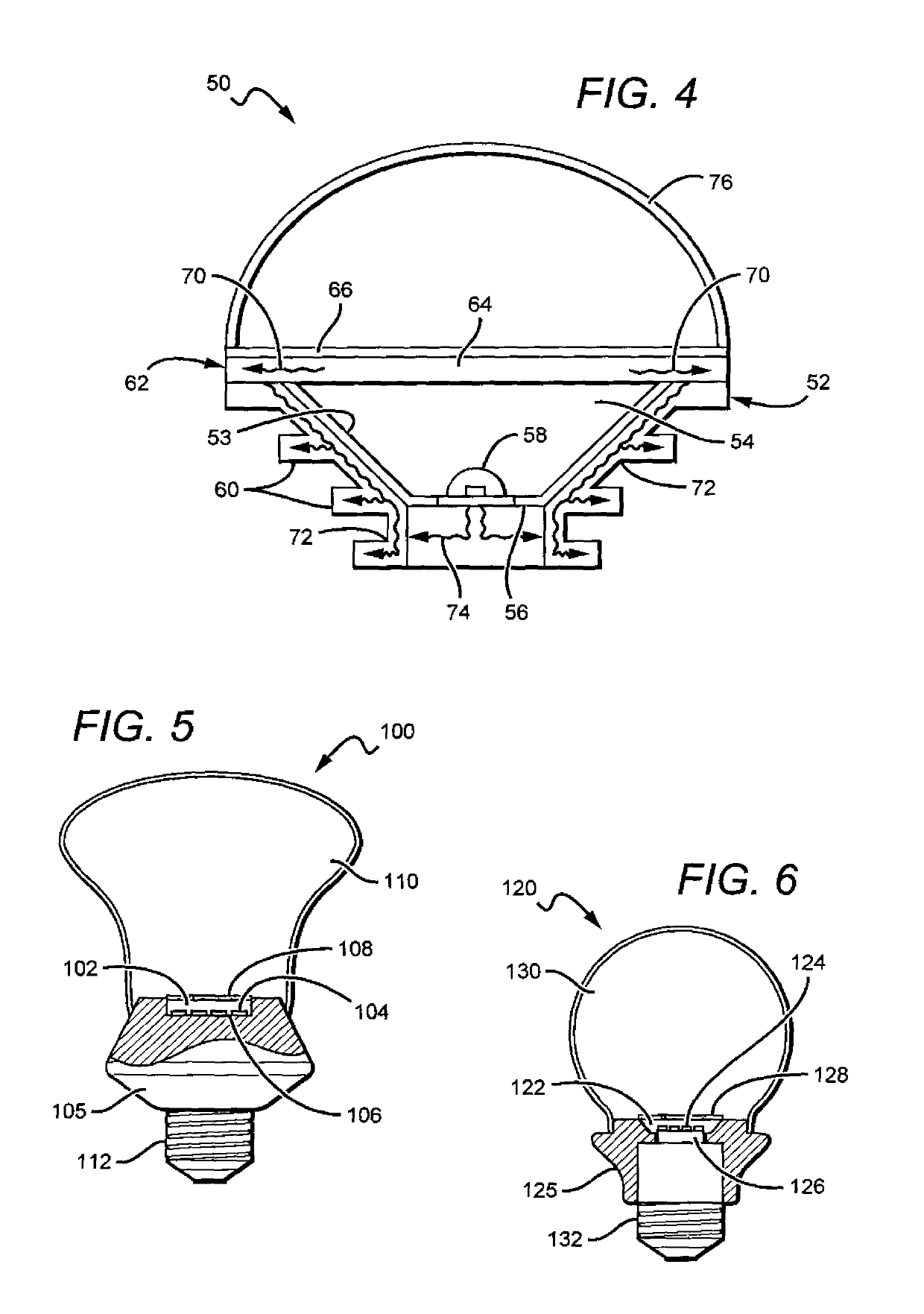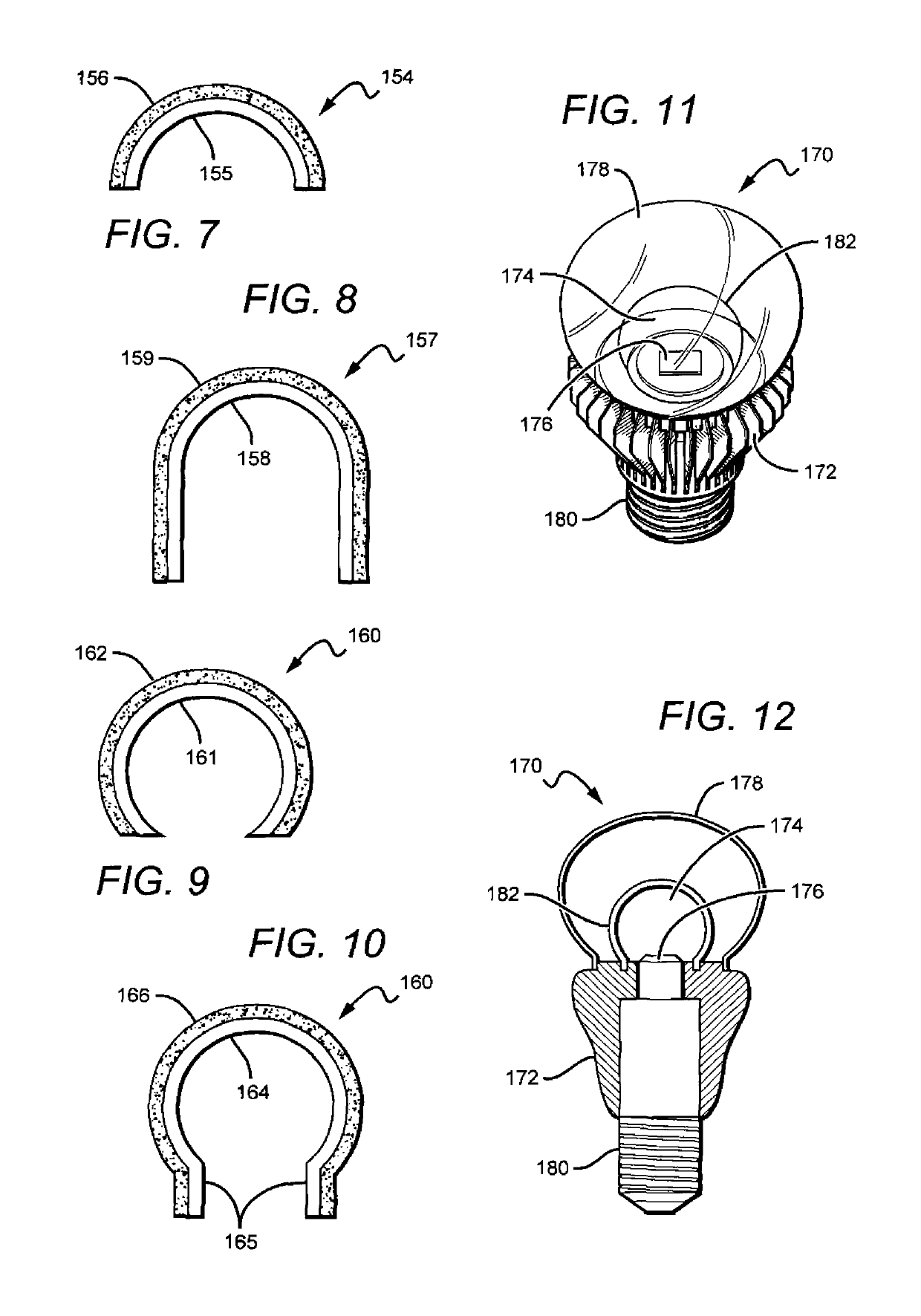Solid state lamp with thermal spreading elements and light directing optics
a technology of thermal spreading elements and solid-state lamps, applied in the direction of semiconductor devices for light sources, coatings, lighting and heating apparatus, etc., can solve the problems of high inefficiency of lamps, chronic and acute poisoning, and loss of as much as 95% of input energy, so as to achieve efficient heat dissipation, reliable and cost-effective
- Summary
- Abstract
- Description
- Claims
- Application Information
AI Technical Summary
Benefits of technology
Problems solved by technology
Method used
Image
Examples
Embodiment Construction
[0043]The present invention is directed to different embodiments of lamp or bulb structures that are efficient, reliable and cost effective, and that in some embodiments can provide an essentially omnidirectional emission pattern from directional emitting light sources, such as forward emitting light sources. The present invention is also directed to lamp structures using solid state emitters with remote conversion materials (or phosphors) and remote diffusing elements or diffusers. In some embodiments, the diffuser not only serves to mask the phosphor from the view by the lamp user, but can also disperse or redistribute the light from the remote phosphor and / or the lamp's light source into a desired emission pattern. In some embodiments the diffuser dome can be arranged to disperse forward directed emission pattern into a more omnidirectional pattern useful for general lighting applications. The diffuser can be used in embodiments having two-dimensional as well as three-dimensional...
PUM
| Property | Measurement | Unit |
|---|---|---|
| angle | aaaaa | aaaaa |
| angle | aaaaa | aaaaa |
| angle | aaaaa | aaaaa |
Abstract
Description
Claims
Application Information
 Login to View More
Login to View More - R&D
- Intellectual Property
- Life Sciences
- Materials
- Tech Scout
- Unparalleled Data Quality
- Higher Quality Content
- 60% Fewer Hallucinations
Browse by: Latest US Patents, China's latest patents, Technical Efficacy Thesaurus, Application Domain, Technology Topic, Popular Technical Reports.
© 2025 PatSnap. All rights reserved.Legal|Privacy policy|Modern Slavery Act Transparency Statement|Sitemap|About US| Contact US: help@patsnap.com



